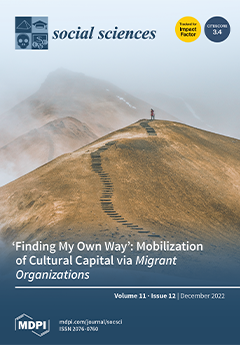Open AccessArticle
Influences of COVID-19 Work-Related Fears and Anhedonia on Resilience of Workers in the Health Sector during the COVID-19 Pandemic
by
Alexander Maget, Melanie Lenger, Susanne A. Bengesser, Armin Birner, Frederike T. Fellendorf, Eva Fleischmann, Jorgos N. Lang, Martina Platzer, Robert Queissner, Michaela Ratzenhofer, Elena Schönthaler, Adelina Tmava-Berisha, Robert M. Trojak, Nina Dalkner and Eva Z. Reininghaus
Viewed by 1273
Abstract
Background: During the peak of the COVID-19 pandemic, healthcare workers worked under stressful conditions, challenging their individual resilience. Therefore, we explored the bidirectional influence of resilience and the factors of COVID-19 work-related fears and anhedonia in Austrian healthcare workers. Methods: Healthcare workers in
[...] Read more.
Background: During the peak of the COVID-19 pandemic, healthcare workers worked under stressful conditions, challenging their individual resilience. Therefore, we explored the bidirectional influence of resilience and the factors of COVID-19 work-related fears and anhedonia in Austrian healthcare workers. Methods: Healthcare workers in Austria completed an online survey at two points in time. The first measurement started in winter 2020/2021 (
t1), and a second measurement began approximately 1.5 years later (
t2). One hundred and eight six individuals completed both surveys and were investigated in a longitudinal design. We applied the Resilience Scale, the Snaith-Hamilton Pleasure Scale, and a self-created questionnaire assessing COVID-19 work-related fears. We used a repeated measures analysis of variance and applied Pearson-Correlations as well as univariate and multivariate analyses of covariance. Results: Resilience was significantly correlated with COVID-19 work-related fears and anhedonia at both points in time in all participants. We found no significant differences for frontline vs. non-frontline workers at
t1 and
t2. Resilience decreased significantly over time. Limitations: Most subjects were examined cross-sectionally. Frontline workers were underrepresented in our sample. Conclusion: Our findings highlight the importance of resilience in healthcare providers. Steps must be taken to maintain and promote resilience in healthcare workers. We suggest that the improvement of resilience, dealing with fears and uncertainty, and the ability to experience joy might have a beneficial influence on the respective other categories as well.
Full article
►▼
Show Figures





